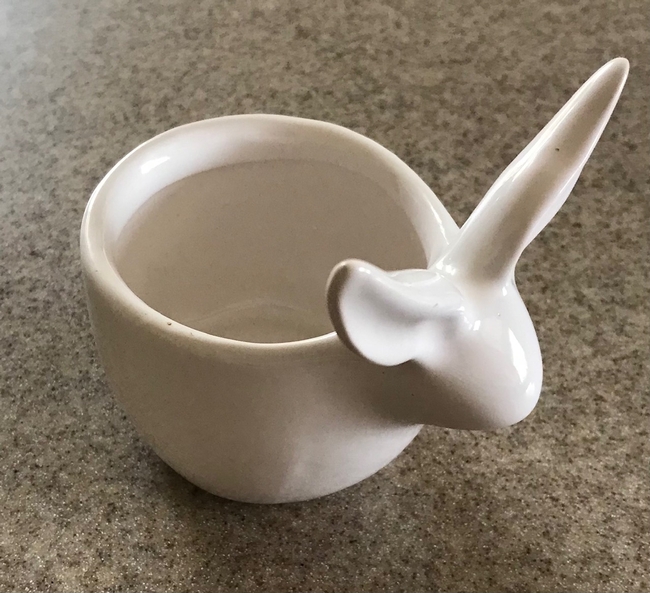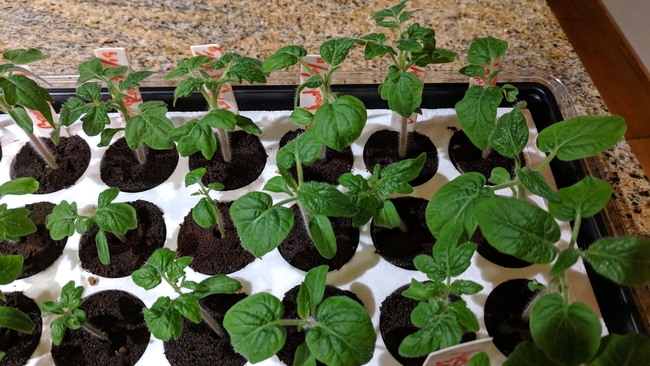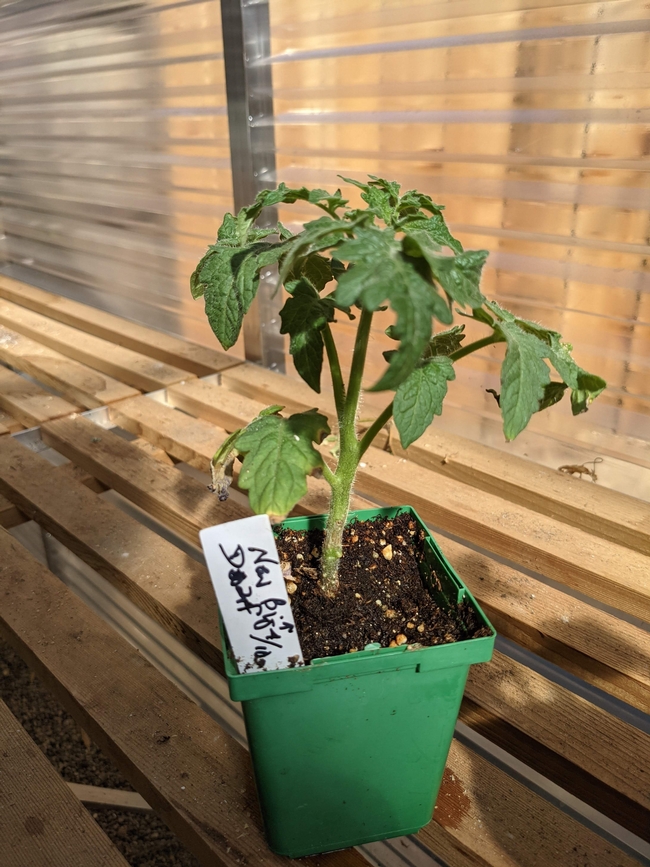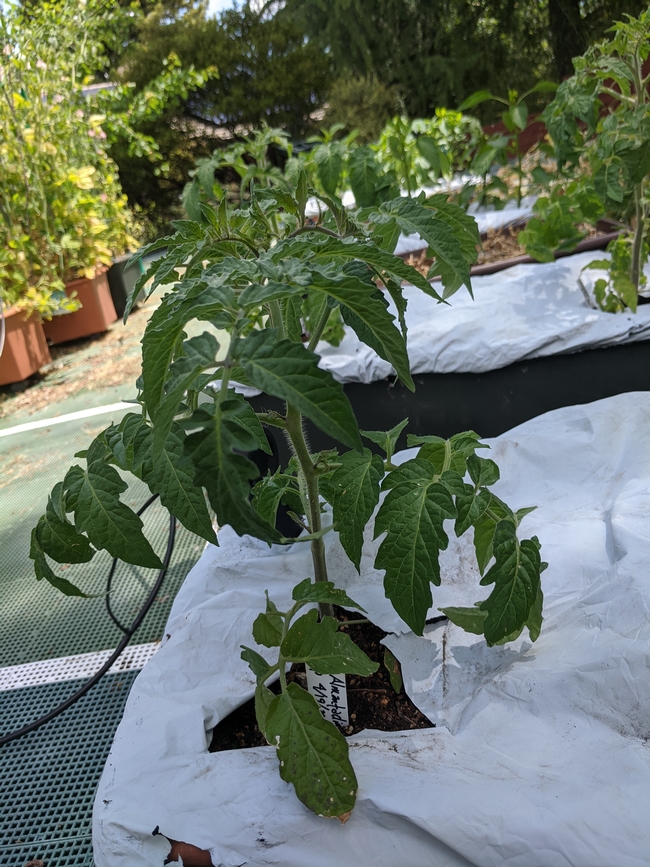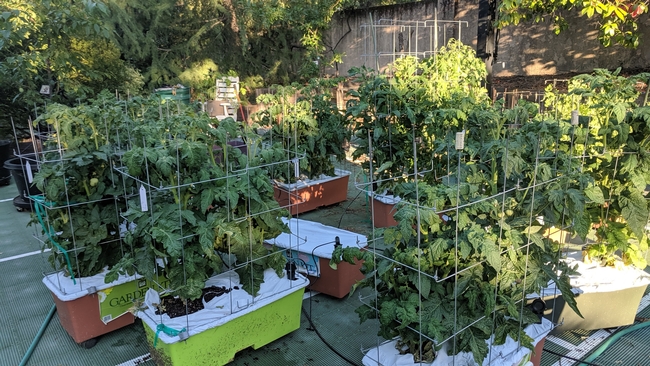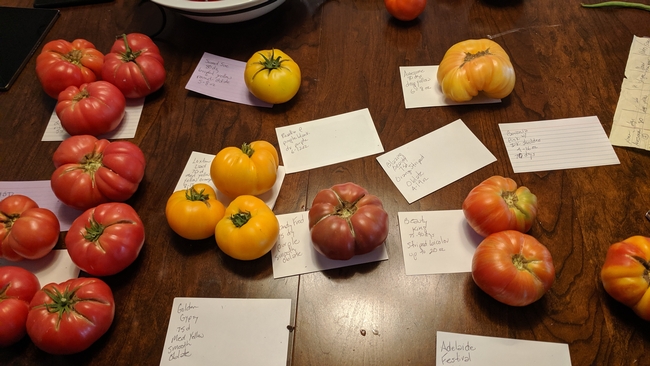Posts Tagged: y
A Kalanchoe by Any Other Name...
My mother bought me the cutest pink flowering plant in a little 2-inch bunny planter for Easter. She told me that she thought it was the prettiest Kalanchoe that she had ever seen. It was adorable, and just bursting with flowers. I was a little puzzled though. The leaves looked like classic scalloped Kalanchoe leaves, but the flowers were different. They looked like a supercharged Kalanchoe on steroids. I noticed that the label on the bottom of the planter said Calandiva.
The World of Succulents website and the Calandiva.com website helped to clear things up. Kalanchoe blossfeldiana is the scientific name for the typical florist Kalanchoe that we all know and love. It has 4 petals to each blossom. In 1998 a grower found a mutant plant whose blossoms had 32 petals per flower. After 4 years of research and careful breeding, growers were able to release this cultivar to the public as Calandiva. So, the official scientific name is Kalanchoe blossfeldiana ‘Calandiva'. It is now available in many colors and is extremely popular.
It is only hardy in USDA zones 10-12, so for most of us, it is grown as a houseplant. Calandiva needs essentially the same care as other Kalanchoe. They need light to flourish. They also need well-draining soil and to be able to dry out between waterings.
Now that I knew what I was dealing with, I looked at my Calandiva and noticed that this full, tall, blooming plant was in a small 2-inch pot. Sure enough, when I turned it over, roots had grown out the bottom. So, I repotted it in a 4-inch pot so it will have some room to stretch out. It seems to be very happy in its new home. According to the experts I can expect to enjoy the blossoms for 4-6 weeks. Thanks, Mom!
California Dogface Butterfly Steals the Show
The California dogface butterfly stole the show at the Bohart Museum of Entomology pop-up tent at Briggs Hall during the...
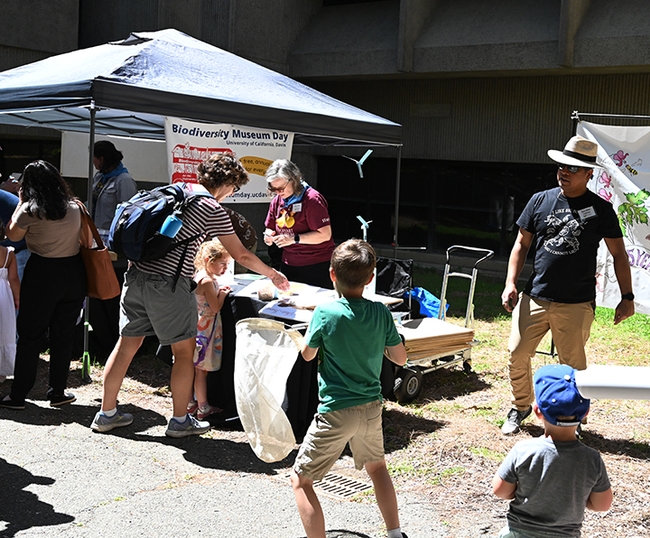
Bohart Museum graduate student and researcher Socrates Letana tosses paper butterflies to the net holders, as Professor Fran Keller (background) of Folsom Lake College staffs the California butterfly table. (Photo by Kathy Keatley Garvey)
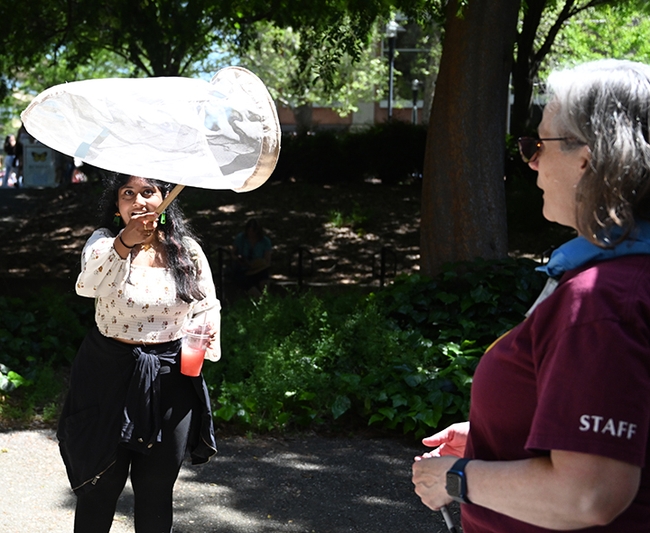
It's a catch! UC Davis undergraduate student Lasya Nalia, majoring in environmental horticulture, nets a paper butterfly tossed by Professor Fran Keller of Folsom Lake College, a Bohart Museum scientist and UC Davis doctoral alumna. (Photo by Kathy Keatley Garvey)
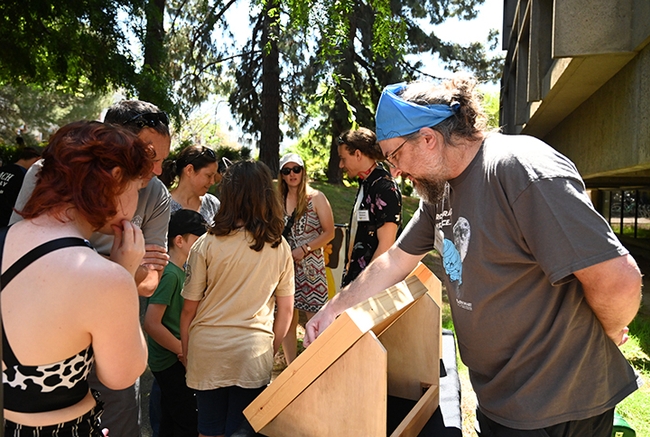
Postdoctoral researcher and arachnologist James Starrett (foreground) and doctoral student and dragonfly expert Christofer Brothers (background) talk to visitors about the insect specimens. (Photo by Kathy Keatley Garvey)

Professor Fran Keller of Folsom Lake College poses with a California dogface butterfly face banner. She is a UC Davis doctoral alumna and a Bohart Museum scientist. (Photo by Kathy Keatley Garvey)
Tomato Diary April 20-Notes to Self
Starting from seed can open the door to more variety, but it helps to keep notes.
1) Don't start too early! Holding seedlings under poor conditions while waiting for ideal weather results in weak, spindly plants. I want my seedlings to be “comfortable” in an airy environment with days of 65-70, and nights of 55-60 degrees Fahrenheit, and under lights 16 hours a day. I grow too many seedlings to use windows for light. Many instructions revolve around freeze dates, but it is nighttime temps around 55 that are most important for setting out tomato plants in my garden. Most years I start in mid-March.
2) Containers should be the right size, and easy to move. I start with the smallest containers to make good use of space and try many varieties, but tomatoes grow quickly, and after true leaves develop, they need to be “potted up” to larger containers.
3) Don't start too late! I want even the late varieties to be outside and ready to flower before days stay above 90 degrees. I usually aim to get them all planted around May 1st.
4) Don't forget about hardening off! Tomato seedlings like to grow in comfort, but you will need to slow growth by “hardening” them to withstand changes in environmental conditions. I “harden off” by gradually exposing them to cooler daytime temperatures; I try for two weeks, starting with 45-50 degrees F for two hours in a shady spot protected from wind.
5) Don't grow so many! I love all the colors, shapes, sizes, and leaves of so many varieties, but most seeds will germinate and survive, and each plant needs five months of care and can produce 10-15 pounds or more!
A Special Day for UC Davis Distinguished Professor Walter Leal
Today (April 30) was a special day for entomologist Walter Soares Leal. “I got two phone calls almost simultaneously on my two...

UC Davis distinguished professor Walter Leal today (April 30, 2024) was named a member of the National Academy of Sciences. (Photo by Kathy Keatley Garvey)
Webinars explore role of trees in climate change resilience, May 14-16
A free webinar series titled “Trees to the Rescue: Solutions for Climate Change” will be held on May 14-16, from 4 p.m. to 5:30 p.m. each day. The webinars are sponsored by the University of California Thelma Hansen Fund.
“The webinars aim to increase our understanding of the role of trees in mitigating climate change, how to plant the right trees and keep them healthy in urban environments, and the challenges of increasing the number of trees at the local level,” said Annemiek Schilder, director of Hansen Agricultural Research and Extension Center, who is organizing the series. Hansen REC is operated by UC Agriculture and Natural Resources.
“Anyone interested in learning about the importance of trees in urban environments and climate adaptation, as well as tree retention in the landscape should join the discussion,” she said. “People working in agriculture, policymakers, crop advisors, researchers, teachers, students, master gardeners and the general public are welcome.”
The agendas for each 90-minute webinar are listed below. To register, visit https://surveys.ucanr.edu/survey.cfm?surveynumber=42636.
Tuesday, May 14: Trees as a Tool for Climate Change Mitigation and Resilience
4 pm Welcome—Annemiek Schilder, Director of Hansen Agricultural Research and Extension Center
4:05 pm Opening Remarks—Matt LaVere, Ventura County Supervisor District 1
4:10 pm Improving Outcomes of Tree Growing and Forest Restoration Efforts—Karen Holl, Professor of Environmental Studies, UC Santa Cruz
4:50 pm Climate Resilience through Urban Greening—Edith de Guzman, UC Cooperative Extension Specialist, Water Equity and Adaptation Policy, UCLA
5:30 pm Closing—Annemiek Schilder
Wednesday, May 15: Optimizing Tree Survival in a Changing Climate
4 pm Welcome—Emma Volk, Production Horticulture Advisor, UCCE Ventura and Santa Barbara counties
4:05 pm Cooling Urban Heat Islands with Climate-Resilient Trees—Janet Hartin, Environmental
Horticulture Advisor, UCCE Los Angeles and San Bernardino counties
4:30 pm Keeping Trees Healthy from Sapling to Maturity—James Downer, Environmental Horticulture & Plant Pathology Advisor Emeritus, UCCE Ventura County
5:05 pm Dealing with the Inevitable Threat of Exotic and Invasive Pests—John Kabashima, Environmental Horticulture Advisor Emeritus, UCCE Orange County
5:30 pm Closing— Emma Volk
Thursday, May 16: Tree Advocacy and Planning at the Local Level
4 pm Welcome—Julie Clark, Natural Resources Community Education Specialist, UCCE Ventura County
4:05 pm Native Tree Restoration with Partners and the Public—Joey Algiers, Restoration Ecologist, Santa Monica Mountains National Recreation Area
4:30 pm Panel Discussion (Joey Algiers, moderator):
- Joey Algiers, Santa Monica Mountains National Recreation Area
- Mireille Vargas, County of Ventura Sustainability Division
- Mikaela Randolph, Green Schoolyards America
- Jan Scow, Registered Consulting Arborist, Ojai Valley
- Max Young, Ventura Regional Fire Safe Council
5:30 pm Closing—Julie Clark


